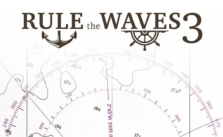Rule the Waves 3: Aircraft Carrier Construction

The key to constructing an aircraft carrier in Rule The Waves 3 is the “Shipboard aircraft operation” tech. This technology determines the type and size of carriers you can build. An aircraft carrier is essentially a ship equipped with a flight deck.
Leveling Up Your Tech
As you advance and improve your “Shipboard aircraft operation” tech, you can create different types of carriers. At level 3, known as “Flight Deck,” you’ll have the ability to convert existing ships into light aircraft carriers (CVL). With more advancements in technology, you can construct purpose-built CVLs, convert ships to full aircraft carriers (CV), and ultimately, build purpose-built CVs.
The maximum displacement of a purpose-built aircraft carrier is also determined by your “Shipboard aircraft operation” tech level.
Aircraft Capacity and Its Limits
Aircraft capacity refers to the number of aircraft your ship can manage or operate. CVLs have a maximum capacity of 34 planes, while full carriers (CV) do not have a set limit. However, if the aircraft capacity exceeds 100, it can lead to decreased operational efficiency and slightly higher costs. This simulates the real-world problems encountered by the U.S. Navy when managing larger carriers.
Spot Value of Aircraft Carriers
An aircraft carrier has a “spot value,” indicating the maximum number of aircraft that can be prepared for a strike. The spot value is usually half the aircraft capacity but can be increased by additional equipment installed on the carrier.
The Role of Flight Deck Catapults
Carriers do not necessarily need catapults to launch aircraft, but they help increase the spot value. Flight deck catapults also allow for the launching of CAP and search planes without the carrier needing to turn into the wind, enhancing practical mobility during a battle. Note that carriers under 10,000 tons must have catapults to launch aircraft at speeds greater than 120 knots.
Jet Capable Carriers
To carry and operate heavy jet fighters and jet attack aircraft, your carrier must be jet capable. This requires a larger weight allowance to accommodate bigger aircraft and the modifications necessary for jet operations. For a ship to be jet capable, it must have a displacement of at least 40,000 tons, or 30,000 tons with advanced steam catapults. Also, on carriers below 40,000 tons, heavy jet fighters and jet attack aircraft will count as 1.5 times the number of aircraft against capacity.
Special Armor for Aircraft Carriers
Adding armor to the flight deck offers some protection from plunging fire and bombs to any aircraft on board. Hangar side armor also helps protect against gunfire, bombs, and near misses. However, both types of armor significantly increase the weight, which can reduce the number of aircraft the ship can carry.
Angled Flight Deck & Deck Edge Lifts
Both an angled flight deck and deck edge lifts can decrease the time required to ready and spot aircraft. Also, an angled flight deck is a prerequisite for operating heavy jet aircraft.
Slow Carriers
Carriers with a speed below 24 knots will have their spot value reduced. This is because a headwind is needed to allow aircraft to take off from a carrier, particularly if the flight deck is crowded with spotted aircraft and the distance available for take-off is short.


